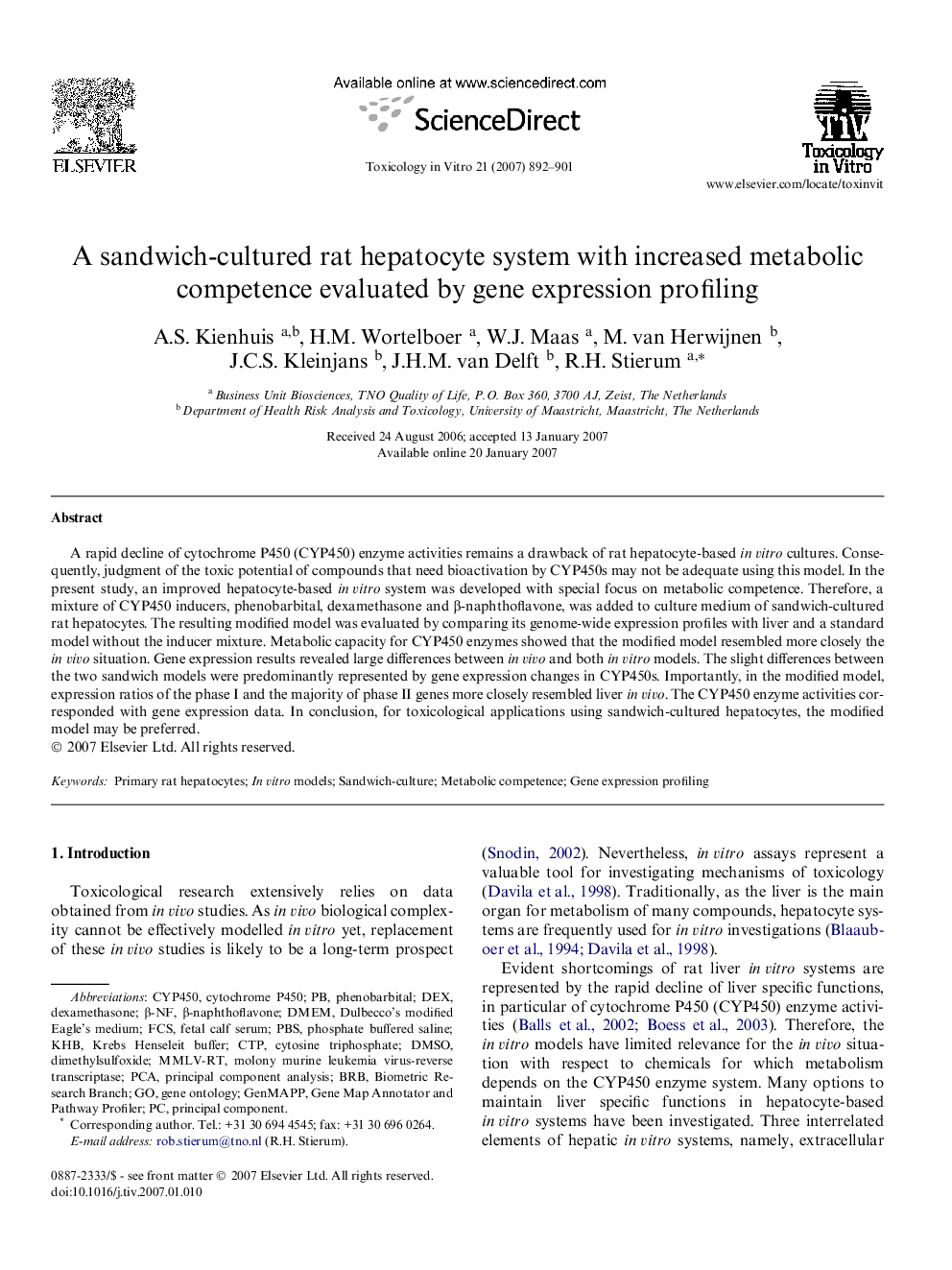| Article ID | Journal | Published Year | Pages | File Type |
|---|---|---|---|---|
| 2603167 | Toxicology in Vitro | 2007 | 10 Pages |
A rapid decline of cytochrome P450 (CYP450) enzyme activities remains a drawback of rat hepatocyte-based in vitro cultures. Consequently, judgment of the toxic potential of compounds that need bioactivation by CYP450s may not be adequate using this model. In the present study, an improved hepatocyte-based in vitro system was developed with special focus on metabolic competence. Therefore, a mixture of CYP450 inducers, phenobarbital, dexamethasone and β-naphthoflavone, was added to culture medium of sandwich-cultured rat hepatocytes. The resulting modified model was evaluated by comparing its genome-wide expression profiles with liver and a standard model without the inducer mixture. Metabolic capacity for CYP450 enzymes showed that the modified model resembled more closely the in vivo situation. Gene expression results revealed large differences between in vivo and both in vitro models. The slight differences between the two sandwich models were predominantly represented by gene expression changes in CYP450s. Importantly, in the modified model, expression ratios of the phase I and the majority of phase II genes more closely resembled liver in vivo. The CYP450 enzyme activities corresponded with gene expression data. In conclusion, for toxicological applications using sandwich-cultured hepatocytes, the modified model may be preferred.
